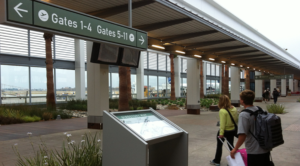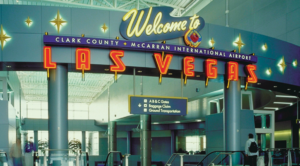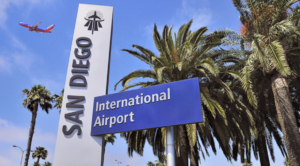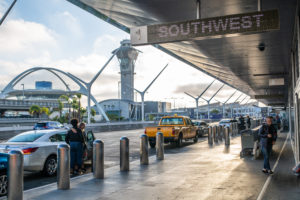Airports are challenging places for wayfinding. The sites are often confusing and the roadways crowded. Terminals and concourses are complex with seemingly confusing names and numbers. And, people are in a hurry and often under stress.
Airports are challenging places for wayfinding. The sites are often confusing and the roadways crowded. Terminals and concourses are complex with seemingly confusing names and numbers. And, people are in a hurry and often under stress.
For air passengers, arriving at an unfamiliar airport can be a daunting experience. Exiting an airplane injects the traveler into an unfamiliar, often chaotic environment. High numbers of first-time visitors must interact with unfamiliar concourse configurations, multiple baggage claim areas and ground transportation choices.
Meeters and greeters are another large part of airport wayfinding users. Connecting arrivals with friends and family at large multi–airline airports is not easy. This critical interaction effects vehicular traffic, parking, curbside congestion and security issues.
The departing passenger needs to be dropped off or get parked, find the correct airline, check-in, negotiate security and the find the correct gate, all on a schedule. Transferring between planes is also a complicated process requiring successful interaction as both an arriving and departing traveler.
Each of the above interactions is facilitated with posted information in the form of signs. And together these many signs, when coordinated in design, wording and placement comprise the airport’s wayfinding program.
In addition to Hunt Design’s substantial experience in all of the aspects of aviation environment wayfinding program design — the technical issues of sign planning, design, facility interface and documentation — we are known for our ability to discover and exploit the often-invisible spatial logic in many airport environments. We call this part of the design process Wayfinding Strategy –how travelers can quickly come to understand and efficiently use the place. We go beyond form, color, font and physical design to create communication interventions that often include names, nomenclature, numbering systems, sequence, zoning and non-signage tools that connect visitor needs with challenging environments.
Note that today’s signage and wayfinding solutions often include high-technology solutions — digital signs, mobile apps, touch screen and even GPS.
Our aviation environment services include
- Evaluation of existing signage
- Wayfinding strategy
- Signage programs
- Maps and directories
- Terminal names and numbering
- Tenant signage criteria
Representative Projects
Long Beach International Airport
McCarran International Airport – D Gates
McCarran Rent-A-Car Center
San Diego International Airport – Terminal 1
San Diego International Airport – Terminal 2
San Diego International Airport – Terminal 2
LAX – Tom Bradley International Terminal
LAX – Terminal 1 Southwest
LAX – Terminal 7/8 United
LAX – Central Terminal Area





